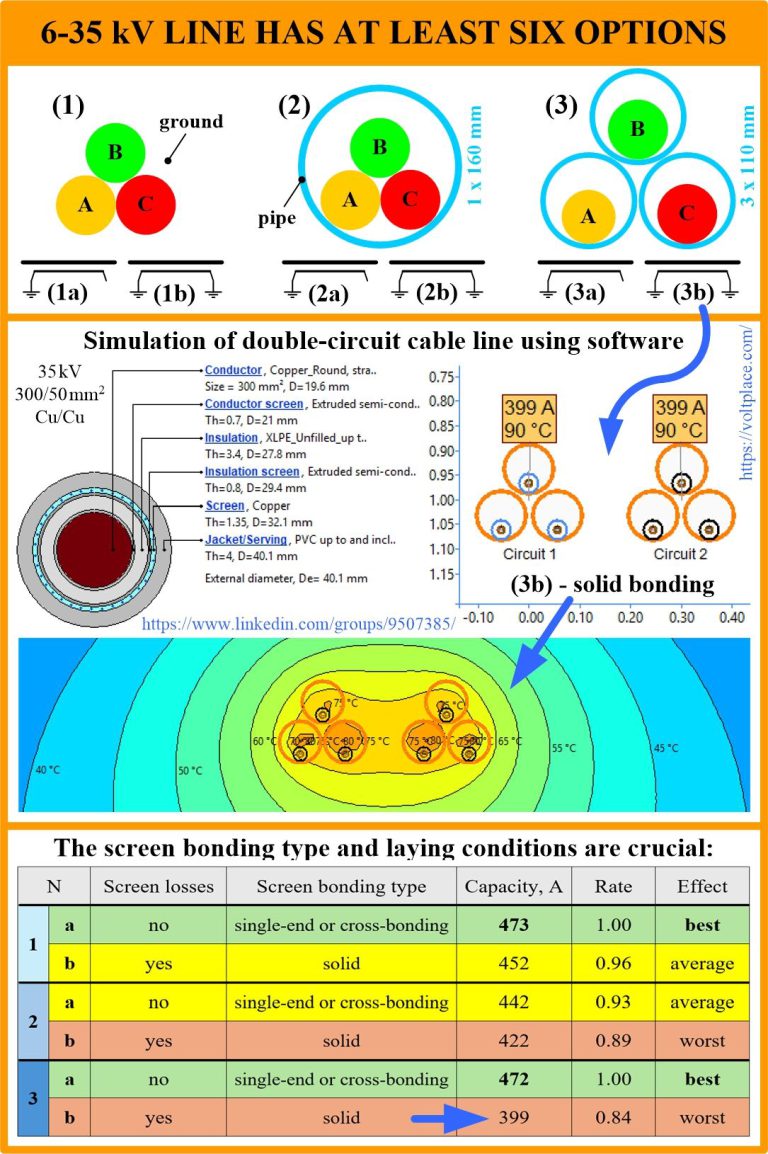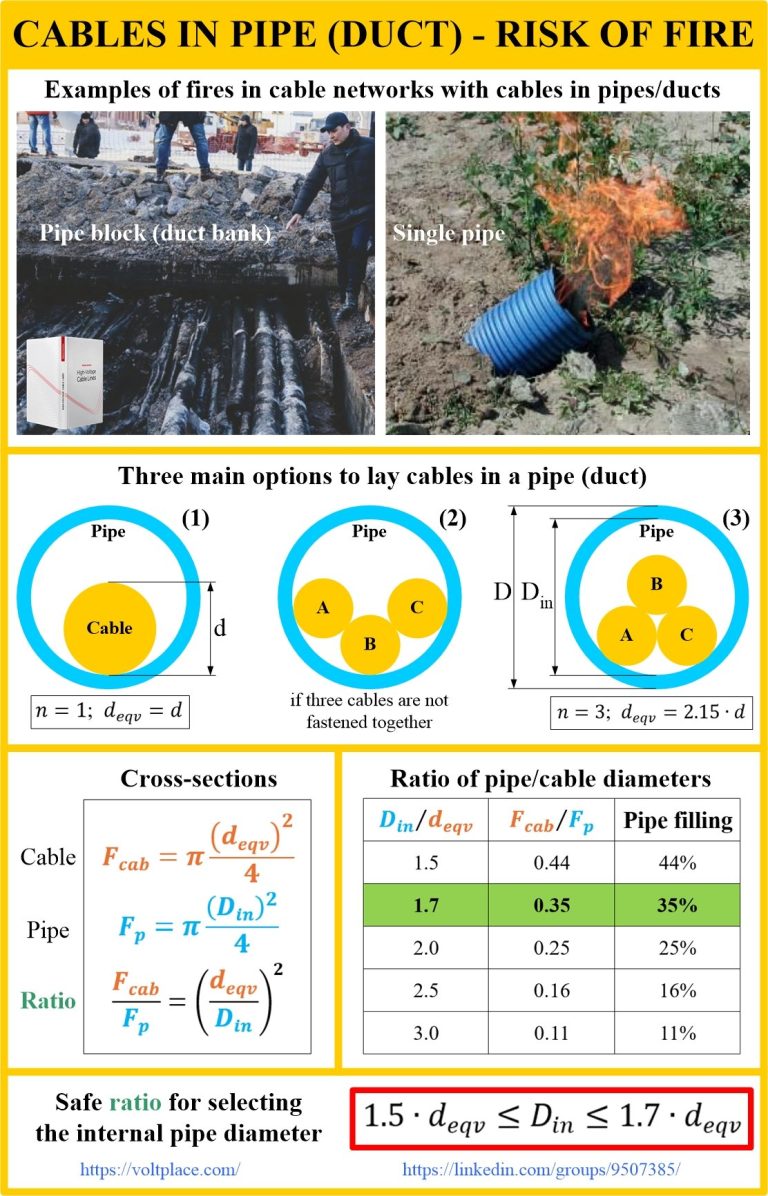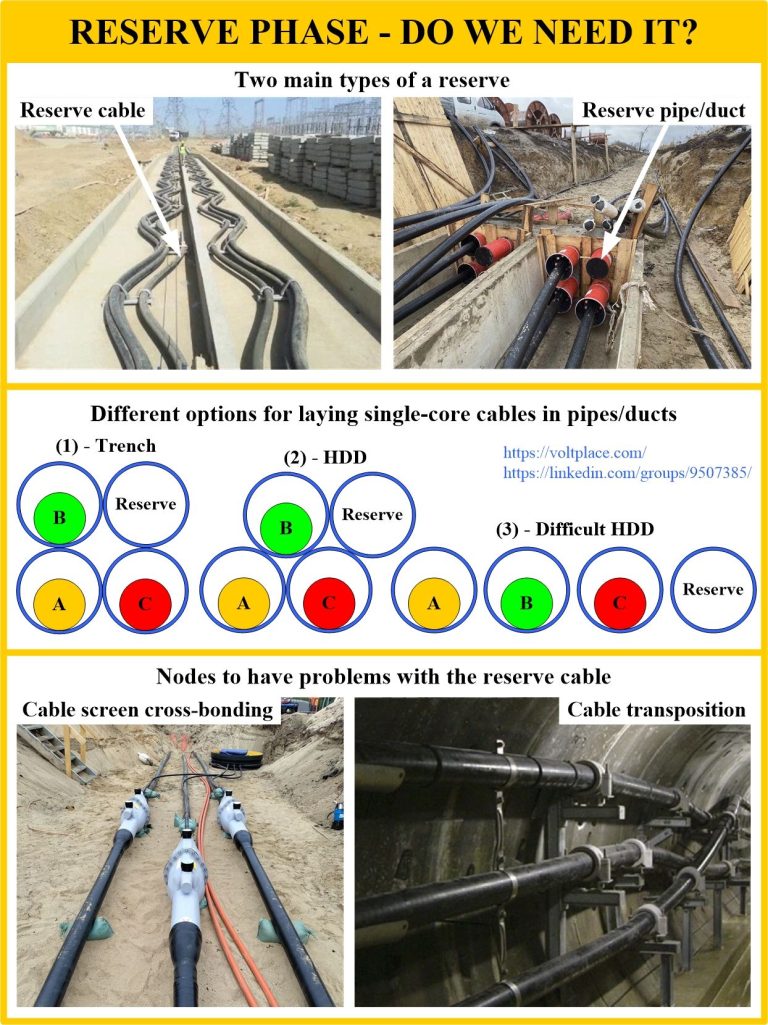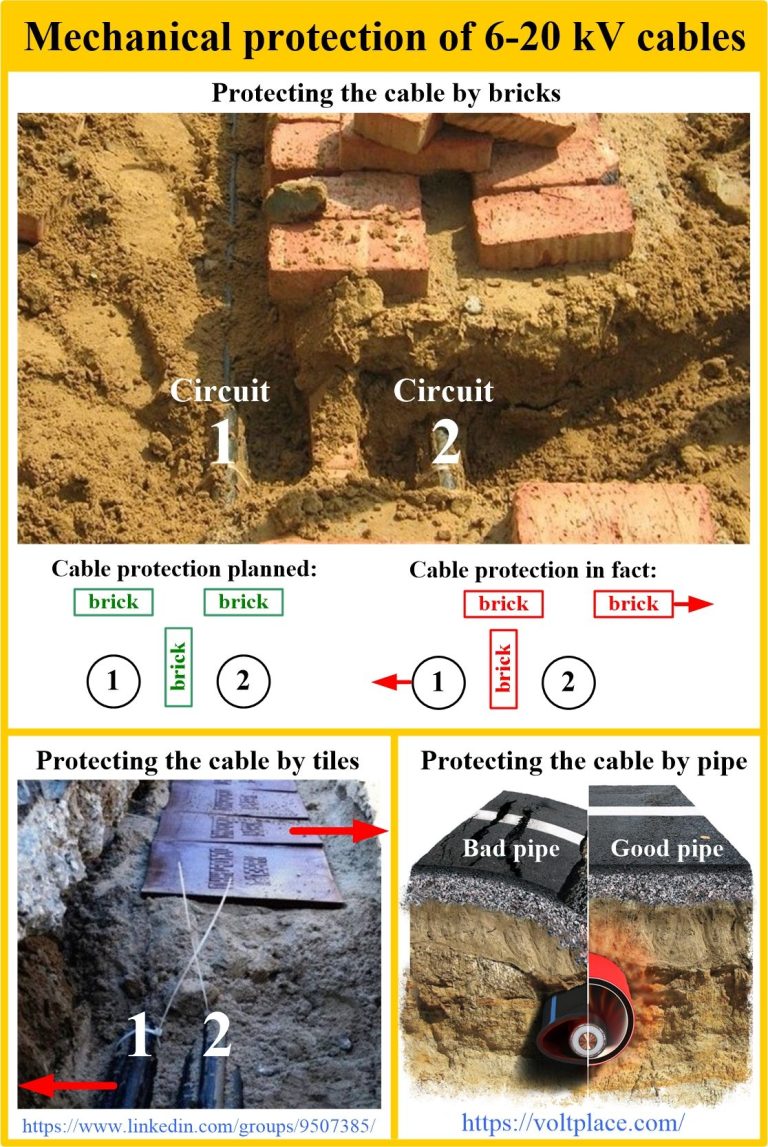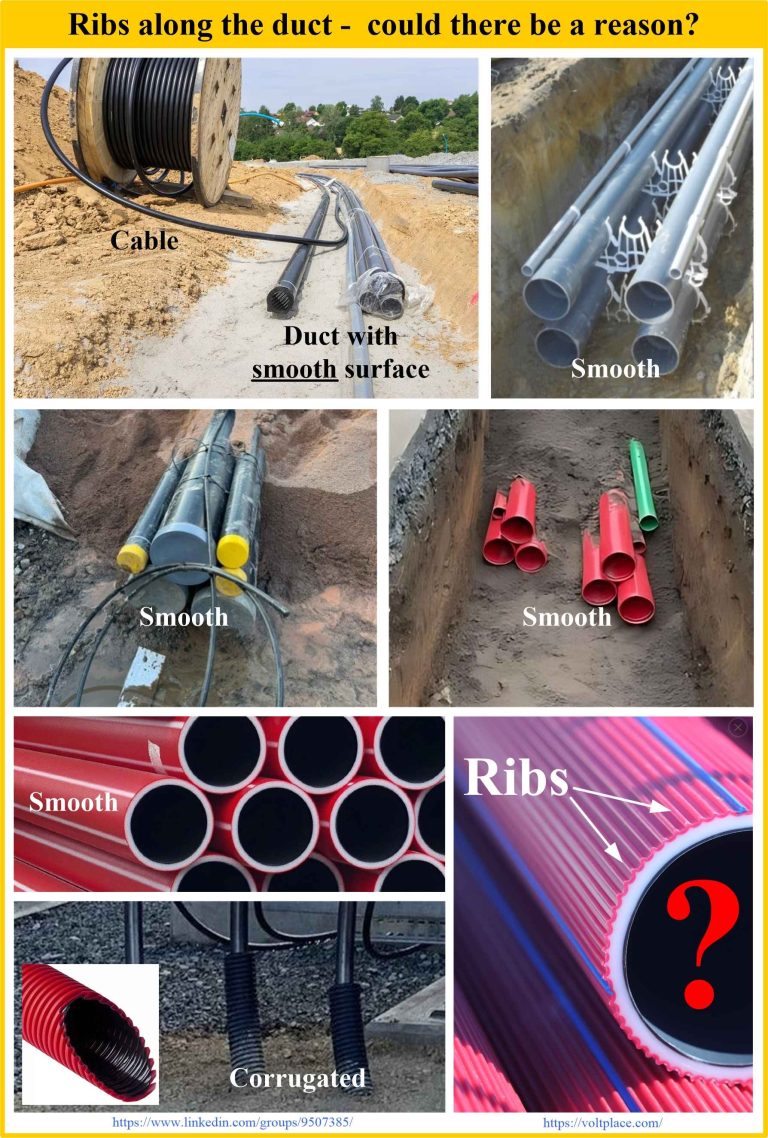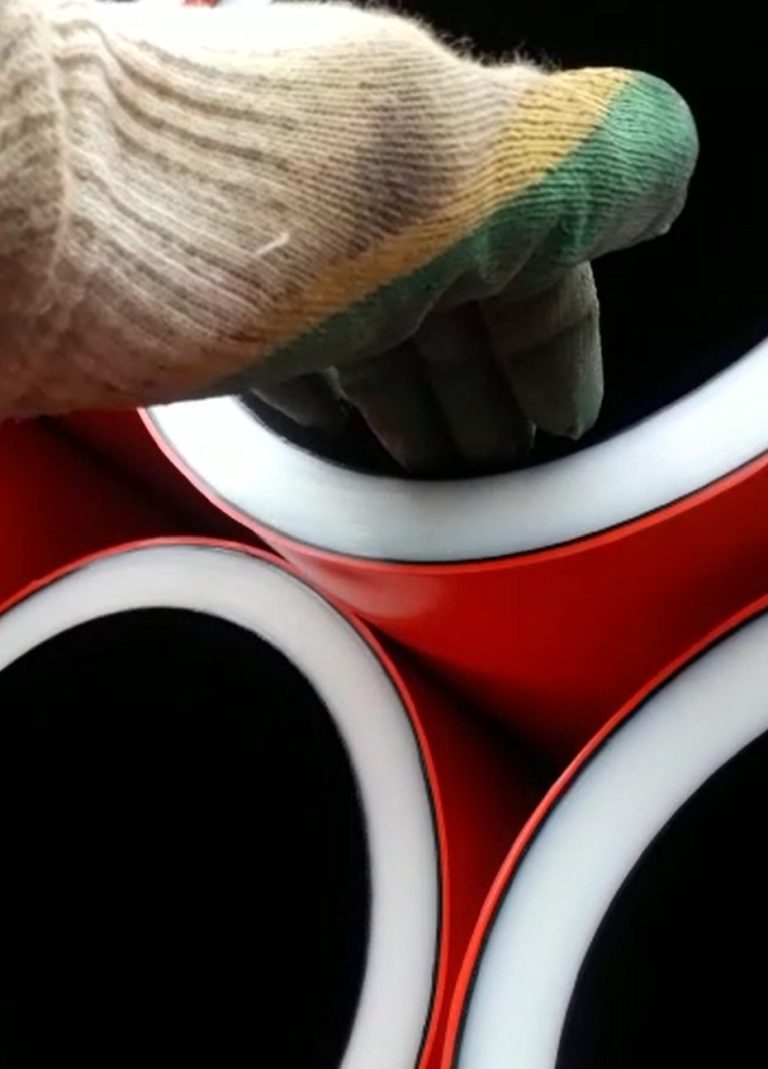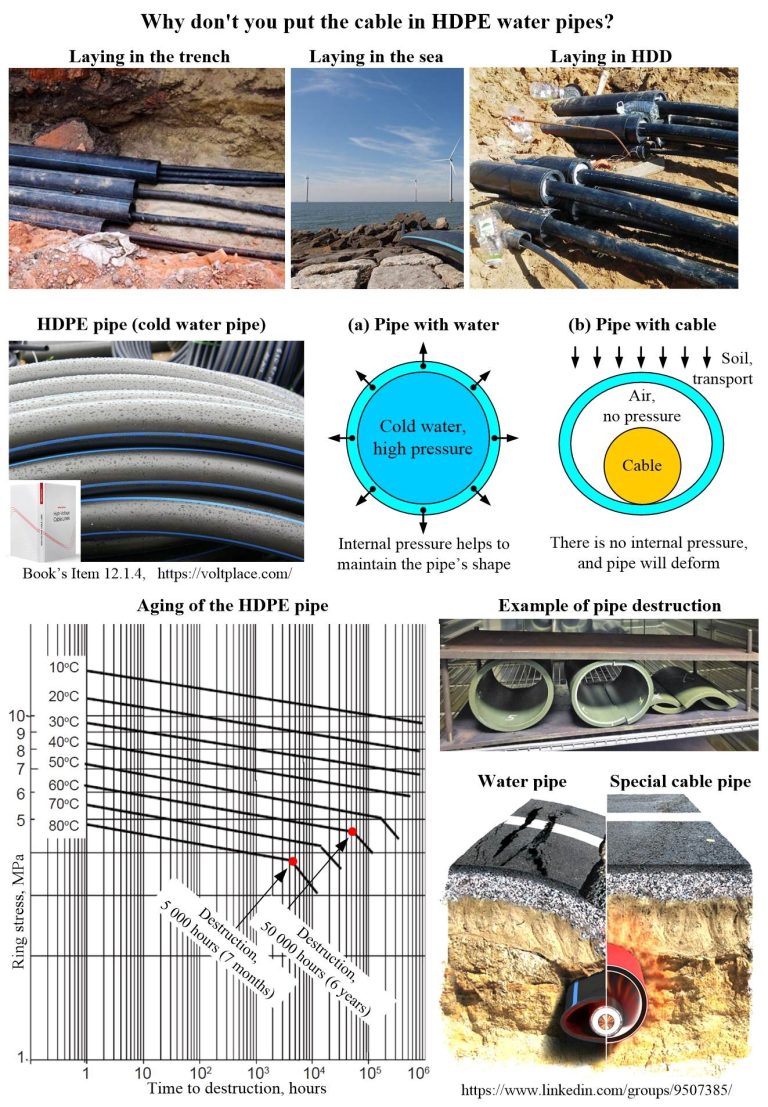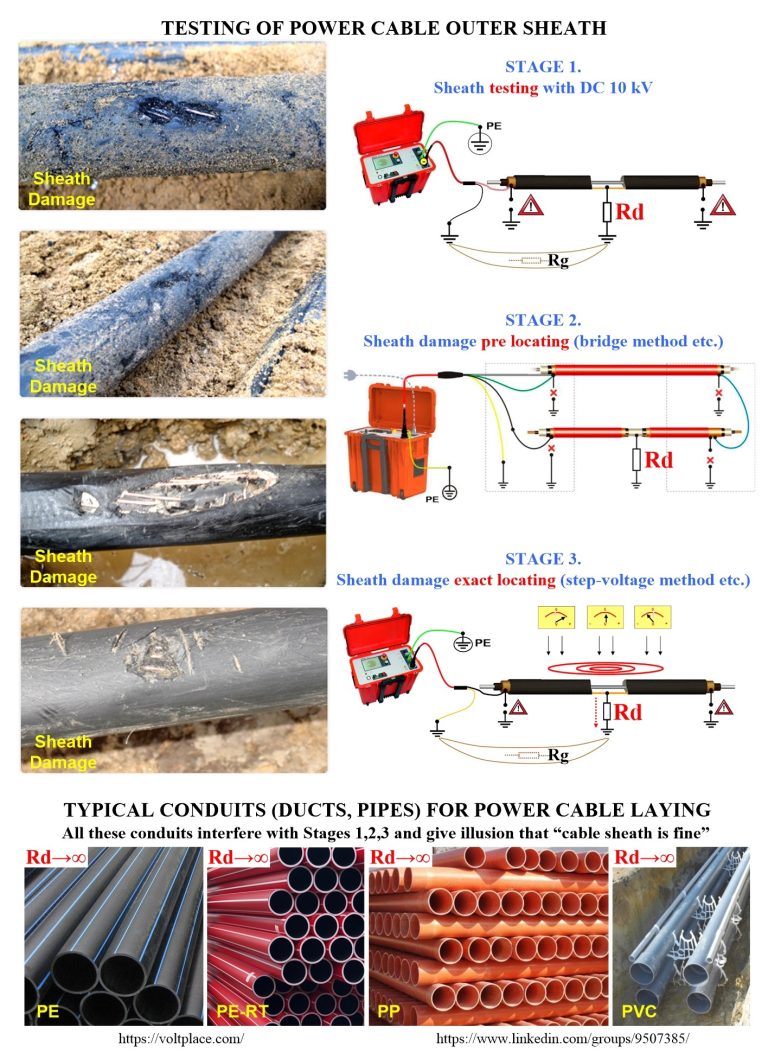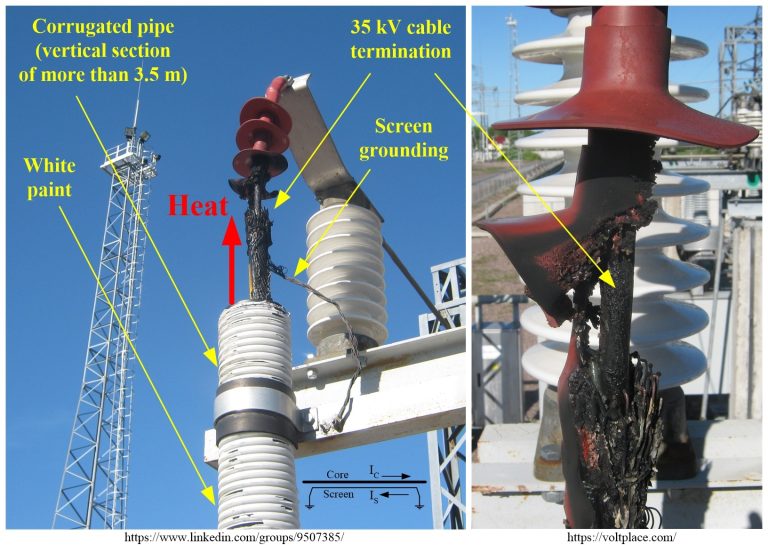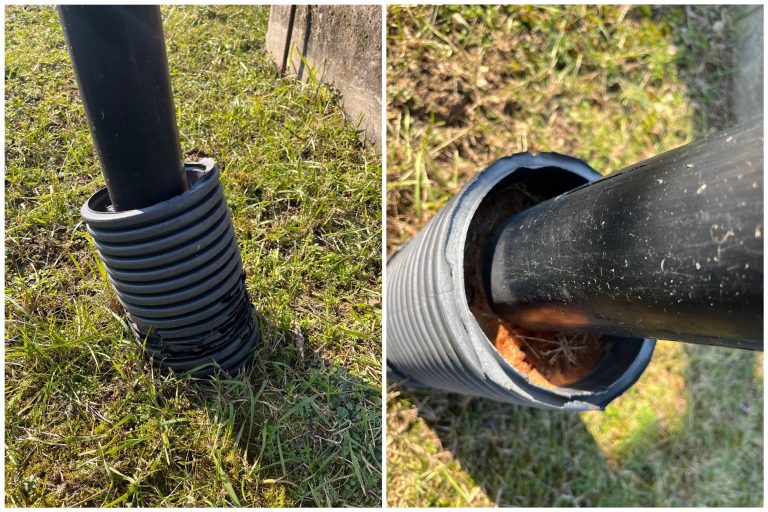Cable line selection
It is not enough to have money to buy a good cable. It is also important to find the time and knowledge to make the necessary calculations and select the best way to lay a cable line, taking into account the screen bonding type. Today, let’s look at a simple calculation example of a double-circuit

